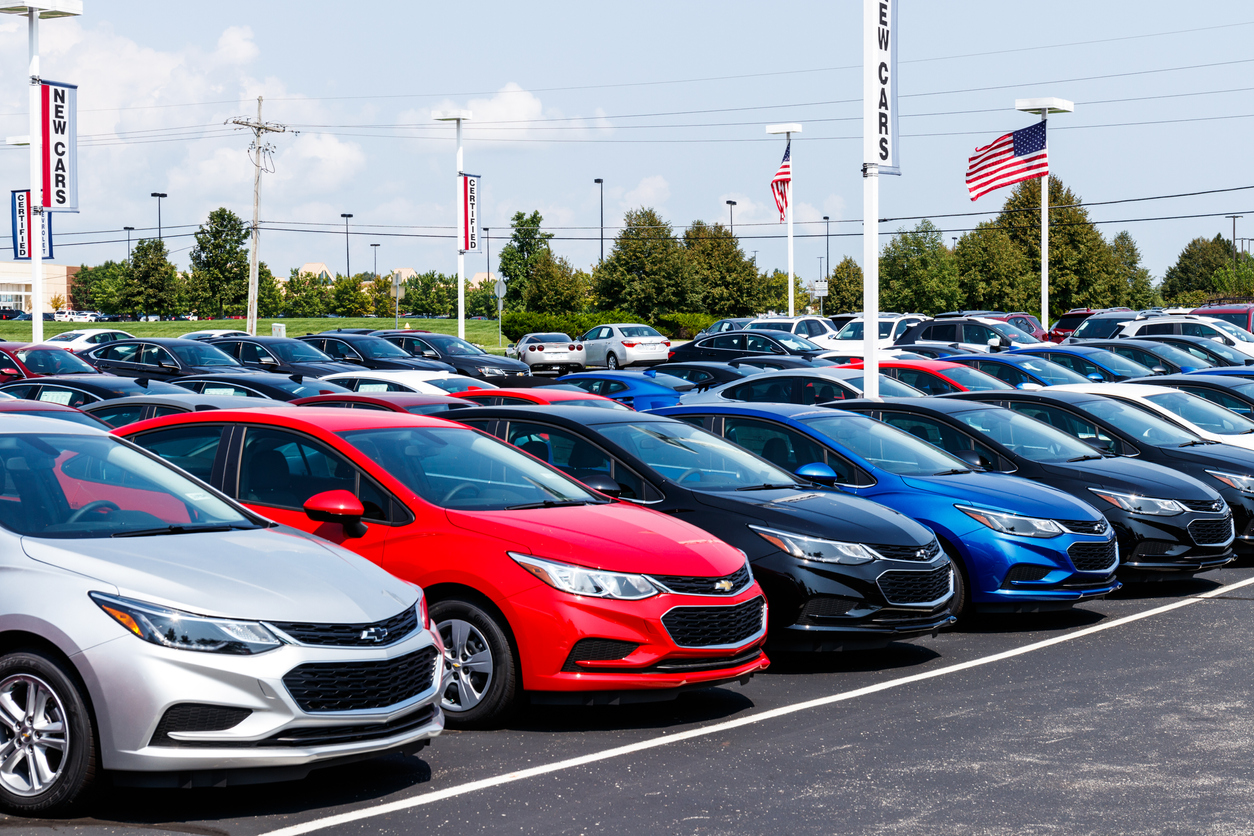Used Ranch Trucks For Sale: Your Indispensable Guide to Finding the Perfect Workhorse pickup.truckstrend.com
In the rugged world of agriculture, ranching, and rural living, a truck isn’t just a mode of transportation; it’s the backbone of daily operations, a tireless workhorse, and often, a trusted companion. From hauling feed and equipment across muddy pastures to towing livestock trailers down dusty roads, a reliable pickup truck is an indispensable asset. While shiny new trucks boast impressive features, the savvy rancher often turns to the used market, recognizing that a well-chosen pre-owned vehicle offers incredible value, proven durability, and the immediate utility needed for demanding tasks. This comprehensive guide will navigate the ins and outs of finding, evaluating, and purchasing the ideal used ranch truck, ensuring you make an informed decision that serves your operations for years to come.
Why Choose a Used Ranch Truck? The Benefits Unpacked
Used Ranch Trucks For Sale: Your Indispensable Guide to Finding the Perfect Workhorse
Opting for a used ranch truck isn’t merely about saving money; it’s a strategic decision rooted in practicality and economic sense.
- Significant Cost Savings: The most obvious advantage. New trucks depreciate rapidly the moment they leave the lot. Buying used means you avoid this initial, steep depreciation, often acquiring a capable vehicle for a fraction of the new price. This frees up capital for other essential farm or ranch investments.
- Proven Durability and Reliability: Many older trucks, especially heavy-duty models, were built with robust components designed for longevity. A used truck has already endured its initial breaking-in period and, if well-maintained, has proven its mettle. You’re buying a vehicle with a track record.
- Immediate Utility and Less Worry: A new truck often comes with the unspoken pressure of keeping it pristine. A used ranch truck, on the other hand, is ready for work. Its existing nicks, dings, and character marks mean you won’t wince at the first scratch from a tree branch or a bale of hay. It’s a tool, ready to be used as such.
- Lower Insurance and Registration Costs: Generally, older, less expensive vehicles cost less to insure and register, contributing to lower overall operating expenses.
- Customization Potential: Many used trucks come with existing modifications (e.g., flatbeds, utility bodies, toolboxes) that might perfectly suit your needs. If not, their lower cost makes it easier to justify adding specialized equipment without over-investing.
- Environmental Friendliness: Extending the life of a vehicle through reuse is a sustainable practice, reducing the demand for new manufacturing and its associated environmental impact.

What Makes a Good Ranch Truck? Key Features to Look For
Not all trucks are created equal when it comes to ranch work. Identifying the right features is crucial for maximum utility and longevity.
- Drivetrain: 4×4 is Non-Negotiable (Mostly): For navigating muddy fields, steep inclines, snow, or pulling heavy loads in soft ground, 4-wheel drive (4×4) is almost always essential. Ensure the 4×4 system engages smoothly and effectively during your test drive.
- Engine Type: Gas vs. Diesel:
- Diesel: Preferred for heavy towing and hauling due due to superior torque and often better fuel economy under load. Diesels typically have a longer lifespan if properly maintained. However, they come with a higher purchase price, more expensive maintenance, and can be harder to start in extreme cold.
- Gas: Lower initial cost, generally cheaper and easier to maintain, and better for shorter trips or less demanding tasks. Modern gas engines offer impressive power, but may struggle more with sustained heavy loads.
- Payload and Towing Capacity: Critically important. Determine the maximum weight you’ll need to haul (feed, tools, water tanks) and the heaviest trailer you’ll tow (livestock, equipment). Look for a truck with a Gross Vehicle Weight Rating (GVWR) and Gross Combined Weight Rating (GCWR) that exceed your needs. Heavy-duty suspension, integrated trailer brake controllers, and a robust hitch are tell-tale signs of a capable work truck.
- Bed Type and Length:
- Long Bed (8 ft): Offers maximum cargo space, ideal for hauling lumber, fencing materials, or multiple bales of hay.
- Flatbed: Extremely versatile for irregularly shaped loads, large equipment, or quick loading/unloading with a forklift.
- Utility Bed: Features integrated compartments and drawers, perfect for organizing tools and small equipment.
- Cab Style:
- Regular Cab: Most cost-effective, shorter wheelbase for better maneuverability in tight spaces, but limited passenger capacity.
- Extended/Crew Cab: Offers more interior space for crew, family, or secure storage of valuable tools. Trades off maneuverability and sometimes bed length.
- Tires: Look for all-terrain (A/T) or mud-terrain (M/T) tires with good tread depth, suited for varied ranch conditions.
- Frame Integrity and Rust: This is paramount. Inspect the frame thoroughly for rust, cracks, or previous repairs. Surface rust is common and often manageable, but deep, structural rust can compromise safety and lead to catastrophic failure. Pay close attention to rocker panels, cab corners, wheel wells, and underneath the bed.


The Buying Process: A Step-by-Step Guide to Finding Your Ideal Ranch Truck
Finding the right used ranch truck requires diligence and a systematic approach.
- Define Your Needs and Budget: Before you start looking, clearly outline what you need the truck for. What’s the heaviest load? What terrain will it traverse? How many passengers? What’s your absolute maximum budget, including a buffer for potential immediate repairs?
- Research and Locate:
- Online Marketplaces: Craigslist, Facebook Marketplace, AutoTrader, eBay Motors, and specialized farm equipment sites (e.g., TractorHouse, MachineryTrader) are excellent starting points.
- Local Dealerships: Used truck dealerships often have a good selection, though prices might be higher.
- Auctions: Farm and equipment auctions can yield good deals, but require quick decision-making and a strong understanding of vehicle condition.
- Word-of-Mouth: Many great ranch trucks change hands within local farming communities. Ask around!
- Initial Screening (Online/Phone):
- Look at photos closely. Are there any obvious red flags (excessive rust, major dents, missing parts)?
- Read descriptions thoroughly. Note mileage, year, make, model, and any mentioned issues.
- Ask the seller targeted questions: Why are they selling? What’s the maintenance history? Any known mechanical issues? Has it ever been in an accident? Get the VIN for a history report (Carfax/AutoCheck).
- Physical Inspection (In Person):
- Exterior: Check for body damage, alignment of panels, tire condition (even wear, tread depth), lights, and especially rust.
- Interior: Look for excessive wear on seats, pedals, steering wheel. Check all electronics (AC, radio, power windows, gauges).
- Under the Hood: Look for fluid leaks (oil, coolant, power steering), frayed belts, corroded battery terminals, and signs of poor maintenance.
- Under the Truck: Crucially, inspect the frame, suspension components, exhaust system, and brake lines for rust, bends, or leaks.
- Test Drive:
- Start the truck cold. Listen for unusual noises (knocking, ticking).
- Check for smoke from the exhaust (blue: oil, white: coolant, black: fuel issues for diesel).
- Drive on varied terrain if possible (pavement, gravel, a bit of rough ground).
- Test brakes (straight, no pulling), steering (no excessive play), and acceleration.
- Engage 4×4 (both high and low range) and listen for grinding or clunking.
- Test all gears in the transmission (smooth shifts, no slipping).
- Pre-Purchase Inspection (PPI): This is arguably the most important step. Hire an independent, trusted mechanic to thoroughly inspect the truck. They can identify issues you might miss, saving you potentially thousands in future repairs.
- Negotiation: Armed with your inspection findings and market research, be prepared to negotiate. Don’t be afraid to walk away if the price isn’t right or if significant issues are uncovered.
- Paperwork: Ensure the title is clear and matches the seller’s ID. Get a bill of sale. Understand your state’s requirements for title transfer and registration.
Common Challenges and Solutions When Buying Used
- Hidden Mechanical Issues: Challenge: The biggest fear. Solution: A comprehensive pre-purchase inspection by a qualified mechanic is non-negotiable.
- Excessive Rust: Challenge: Common in older trucks, especially from regions with harsh winters. Solution: Thorough visual inspection of the frame and body. Prioritize trucks from dry climates. Understand that some surface rust is manageable, but structural rust is a deal-breaker.
- High Mileage: Challenge: A truck with 200,000+ miles might seem daunting. Solution: Mileage is less critical than maintenance history. A well-maintained high-mileage diesel can outlast a neglected low-mileage gas truck. Focus on records and the PPI.
- Abuse/Neglect: Challenge: Ranch trucks work hard and can be abused. Solution: Look for signs of neglect: dirty fluids, worn-out tires, neglected interior, non-functioning accessories. Ask about the truck’s previous work life.
- Lack of Maintenance Records: Challenge: Makes assessing the truck’s health difficult. Solution: Be more cautious, factor in a larger repair budget, and rely heavily on the PPI. It’s a riskier purchase.
- Scams: Challenge: Fake listings, VIN cloning, pressure tactics. Solution: Always meet in person, verify ownership documents, never pay without seeing the vehicle, and be wary of deals that seem too good to be true.
Maintaining Your Used Ranch Truck for Longevity
Once you’ve acquired your workhorse, proper maintenance is key to maximizing its lifespan and reliability.
- Adhere to Service Schedules: Regular oil changes, filter replacements (air, fuel, oil), and fluid checks (transmission, differential, coolant) are vital.
- Rust Prevention: Wash the truck regularly, especially after driving through mud or chemicals. Consider applying undercoating or rust-inhibiting sprays.
- Tire Care: Keep tires properly inflated, rotate them regularly, and replace them when tread is low.
- Suspension Checks: Ranch trucks endure rough terrain. Periodically inspect shocks, springs, and steering components for wear.
- Brake System: Regularly check brake pads, rotors, and fluid levels.
- Cleanliness: A clean interior and exterior not only look better but also help you spot issues like leaks or rust early.
Used Ranch Truck Price Guide
Please note: Prices for used ranch trucks are highly variable based on location, specific make/model/year, condition, mileage, engine type, and market demand. This table provides general estimates for guidance.
| Category/Feature | Description | Typical Price Range (USD) | Key Considerations |
|---|---|---|---|
| Basic Workhorse | Older models (15+ years), high mileage (250k+), cosmetic wear, 2WD or basic 4×4. Often requires some immediate repairs. | $3,000 – $8,000 | Best for light-duty, occasional farm use, or as a dedicated "beater" truck. Prioritize mechanical soundness over aesthetics. Expect to do some work yourself. |
| Mid-Range Utility | 8-15 years old, moderate mileage (150k-250k), decent condition, 4×4 common, some convenience features. | $8,000 – $18,000 | Good balance of cost and capability for regular ranch tasks. Likely needs some preventative maintenance or minor repairs soon. Good value for money. |
| Heavy-Duty/Newer | 3-8 years old, lower mileage (<150k), excellent mechanical and cosmetic condition, often diesel, advanced towing/safety features. | $18,000 – $35,000+ | Offers performance and reliability close to a new truck without the full depreciation hit. Ideal for serious, heavy-duty work. |
| Flatbed/Utility Body | Price premium added to base truck cost for specialized beds. | +$1,500 – $5,000 | Increases versatility for specific ranch tasks like hauling large, irregular items or organizing tools. Factor this into the overall budget. |
| Diesel Engine | Price premium over comparable gas models. | +$2,000 – $10,000 | Higher torque and better fuel economy for heavy hauling, potentially longer lifespan. Higher maintenance costs over time. |
| Rust Belt vs. Dry Climate | Trucks from dry climates (e.g., Southwest) command higher prices due to less corrosion. | +$500 – $3,000 | Less rust means fewer structural issues, easier repairs, and a longer life for the vehicle. Inspect thoroughly for regional rust patterns. |
| Pre-Purchase Inspection (PPI) | Cost of a professional mechanic’s comprehensive check. | $100 – $250 | A small, essential investment to uncover hidden problems and potentially save thousands in future repairs. |
Disclaimer: These are approximate ranges. Actual prices will vary based on brand (e.g., Ford F-250, Chevy Silverado 2500, Ram 2500), specific model year, engine type, transmission, features, and overall condition. Always do your local market research.
Frequently Asked Questions (FAQ)
Q: What’s the ideal mileage for a used ranch truck?
A: There’s no single "ideal." For gas trucks, under 150,000-200,000 miles is generally good. For diesels, 250,000-350,000 miles is often considered mid-life, and they can go much further with proper maintenance. Maintenance history is far more important than mileage alone.
Q: Should I buy a gas or diesel truck for ranch work?
A: If you regularly tow heavy loads (large livestock trailers, heavy equipment) or need maximum torque and longevity, a diesel is usually the better choice. For lighter hauling, occasional towing, lower initial costs, and cheaper maintenance, a gas truck is often sufficient.
Q: Is 4×4 really necessary for a ranch truck?
A: For most ranch operations involving varied terrain, mud, snow, or pulling in fields, 4×4 is highly recommended, if not essential. It significantly increases the truck’s utility and safety in challenging conditions.
Q: How much should I budget for repairs after buying a used ranch truck?
A: Always set aside an immediate repair fund, typically 10-20% of the purchase price, especially for older or higher-mileage vehicles. This covers unforeseen issues identified during or after the PPI.
Q: Where are the best places to find used ranch trucks?
A: Online classifieds (Craigslist, Facebook Marketplace, AutoTrader), specialized farm equipment websites, local auctions, word-of-mouth within farming communities, and local used car dealerships are all good sources.
Q: How do I check for rust effectively on a used truck?
A: Bring a flashlight and look thoroughly at the frame, especially where components attach. Check rocker panels, cab corners, wheel wells, and under the bed. Tap suspicious areas with a small hammer (gently) to check for soft spots. Pay attention to brake lines and fuel lines.
Q: What truck brands are generally considered best for ranch work?
A: The "Big Three" American truck manufacturers dominate this segment: Ford F-Series (F-250, F-350), Chevrolet Silverado/GMC Sierra (2500HD, 3500HD), and Ram (2500, 3500). Toyota Tundra/Tacoma can also be good for lighter-duty ranch work, known for their reliability.
Conclusion
A used ranch truck is more than just a vehicle; it’s a vital piece of equipment that can significantly impact the efficiency and success of your rural operations. By understanding the benefits of buying used, knowing what features to prioritize, diligently following a structured buying process, and committing to proper maintenance, you can acquire a powerful, reliable, and cost-effective workhorse. With the right approach, your chosen used ranch truck won’t just get the job done; it will become an indispensable partner in your daily endeavors, proving its value mile after rugged mile.